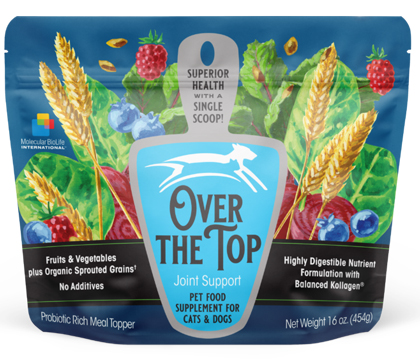

Do Hip & Joint Supplements Really Work?
Here’s how supplementation can make a difference, and what to look for
The following are tried and true joint helpers that work to lower inflammation, lubricate joints, and build cartilage. Note that joint supplements work best to protect joints. Don’t wait to start until your dog has end-stage bone-on-bone osteoarthritis in every joint—get started now to reap the benefits. Start as early as possible in large-breed dogs or dogs predisposed to the development of osteoarthritis, says Dr. Matt Brunke, DVM, CCRP, CVPP, CVA. He notes that joint supplements can be given to puppies as young as eight weeks of age that are predisposed to the development of osteoarthritis.
Oral Joint Supplement Guide
Fish oil, a rich source of Omega-3 fatty acids, helps to reduce inflammation and improve joint mobility. Omega-3s are known to support heart health and joints, improve kidney function, and boost the immune system. When it comes to Omega-3s, DHA and EPA from wild-caught cold-water fish is best. Farm-raised fish have low levels of Omega-3s and high levels of Omega-6s, Dr. Brunke says.
One study found that some dogs receiving carprofen—a non-steroidal anti-inflammatory drug (NSAID) used to treat pain and inflammation in dogs—for osteoarthritis pain needed less carprofen when they were also fed a diet supplemented with Omega-3 fatty acids derived from fish oil.
Flaxseed is another source of Omega-3 fatty acids. It also contains fiber and antioxidants, reducing inflammation while supporting digestion, skin, and coat; however, flax seed alone does not provide sufficient amounts of DHA and EPA to fight osteoarthritis in dogs.
Glucosamine is a natural compound found in joint cartilage that helps cushion and lubricate joints. This cartilage building block stimulates the growth of cartilage cells. Supplements containing glucosamine can help reduce inflammation and joint pain, improve mobility, and slow joint deterioration. A randomized, double-blind trial studied 35 dogs with confirmed osteoarthritis of the hip or elbow for their response to orally administered glucosamine hydrochloride and chondroitin sulfate. Although the onset of efficacy was slower, dogs treated with glucosamine-chondroitin rather than the NSAID Carprofen showed statistically significant improvements in pain scores and weightbearing by day 70.
Chondroitin sulfate. This supplement works by inhibiting cartilage-destroying enzymes. When given glucosamine,
chondroitin has a synergistic effect and has been shown to lessen inflammation if given before a joint injury in dogs,
says Dr. Brunke.
Curcumin. Turmeric's main active component, curcumin, is what gives the spice its trademark yellow colour. This frequently studied phytonutrient also has anti-inflammatory properties. One study has shown curcumin may support healthy joint mobility and comfort.
CBD, a non-psychoactive hemp derivative, has been found to help with pain management in dogs. A study undertaken by Cornell University College of Veterinary Medicine found that more than 80 percent of dogs with osteoarthritis experienced a significant decrease in pain when given CBD for a month.
Green-lipped mussels. A 2013 study found increased concentrations of plasma Omega-3 fatty acids and improvement of peak vertical force in dogs fed a diet enriched with green-lipped mussels.
Boswellia serrata. This tree extract is said to have an NSAID-like effect. A 2004 study showed a statistically significant reduction of severity and resolution of the signs of osteoarthritis in dogs, such as periodic lameness, local pain, and stiffness, after six weeks of treatment with Boswellia serrata.
Editor's Pick
For joint and connective tissue support, we like Molecular Biolife’s Over The Top Joint supplement. This super-powered, highly digestible formula is made with four different collagens, organic sprouted seeds for a prebiotic and probiotic boost, fruit and vegetable powders, and kefir to improve joint mobility. ($17, mbipet.com)
Pro Tips
- The Omega-3s in most maintenance diets are not high enough to treat disease states. You will need to administer an Omega-3 supplement on top of a maintenance diet formulated with Omega-3s to attain therapeutic levels.
- Glucosamine hydrochloride and chondroitin sulfate work, but the onset of action is slow. Your dog may need an NSAID for a month or two until it takes effect.
- Many dog treats contain glucosamine and chondroitin but look at the label—in order to reach therapeutic levels, your dog will almost certainly require additional supplementation of glucosamine or chondroitin.
- Always check with your vet before adding anything to your dog's diet.
This article originally appeared in the award-winning Modern Dog magazine. Subscribe today!
Join the newsletter and never miss out on dog content again!
"*" indicates required fields
By clicking the arrow, you agree to our web Terms of Use and Privacy & Cookie Policy. Easy unsubscribe links are provided in every email.






